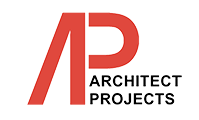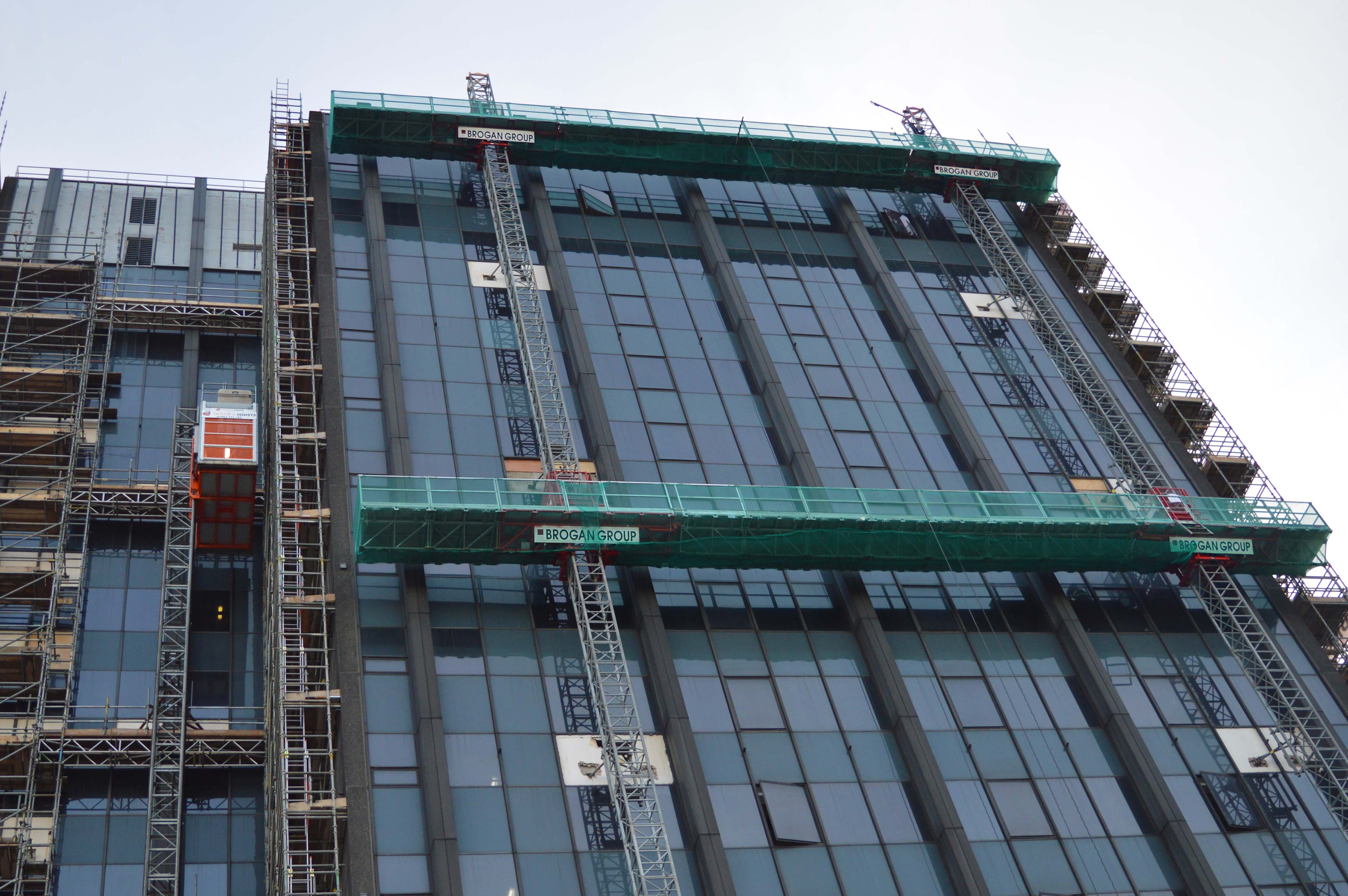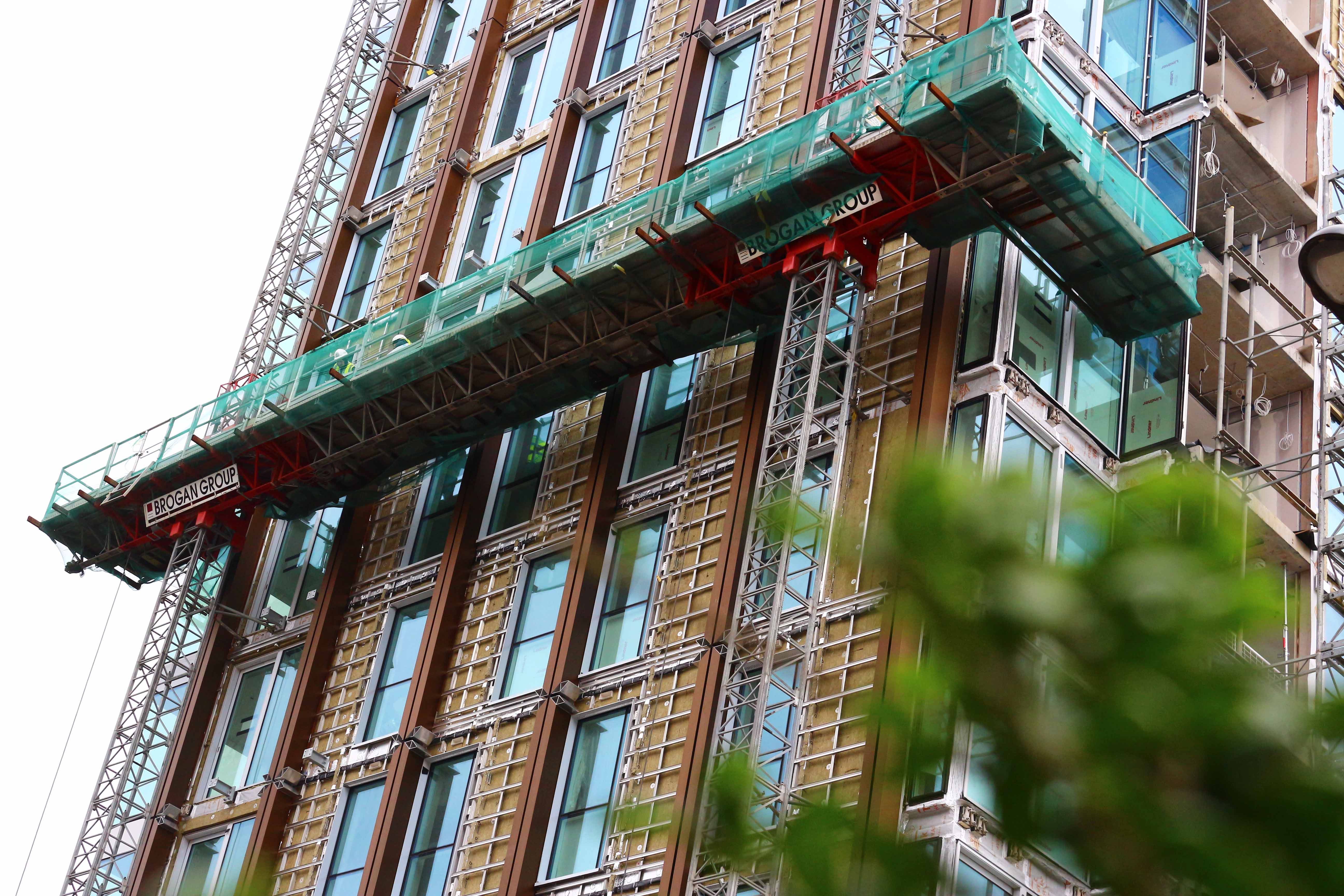Combustible cladding crisis – Solutions for efficient re-cladding and correction of non-compliant facades

A Government report in June of this year revealed that 470 buildings in the UK are using the same flammable cladding as that of the Grenfell Tower. The Building Safety Programme Report, released by the Ministry of Housing, Communities and Local Government stated that almost 500 buildings across England are using the Aluminium Composite Material (ACM) cladding responsible for the rapid spread of the fire in last year’s tragedy. This report served merely as the latest addition to a debate that has been ongoing since the tragedy, causing many parties confusion and dread and centring on the primary question of who is responsible for making sure this doesn’t happen again and what are they going to do about it?
In July of this year, the PM, Theresa May confirmed that the government will fully fund the removal and replacement of dangerous cladding by councils and housing associations, at an estimated cost of £400m. But this still leaves over 300 private sector residential buildings (including hotels and student accommodation) exceeding 18m that were also identified as having ACM cladding systems unlikely to meet building regulations guidance. Access specialists Brogan Group contend that powered access, in the form of mast climber working platforms (MCWPs), is at least one part of the solution to this problem that is not only relatively simple but clearly the most obvious in terms of time, cost and practicality.
“Along with the cost of materials and administration, the inescapable cost of providing access for this skilled work to be carried out needn’t be prohibitive or excessive” explains Mr. Casey, Operations Director and Head of the Powered Access Division that oversees MCWP projects at Brogan Group. The repair of cladding to the façades of what are, in many cases, high-rise structures, already occupied, requires careful planning but most importantly, efficiency and the capability to act fast yet meticulously.
Specialist teams will need access to remove the combustible panels and replace them with compliant cladding or make good what remains. This is, by many accounts, no small feat, as some buildings require specialist assessment following the removal of the cladding, therefore requiring timings to adapt as the work goes on. Add to this, the time and cost involved in using labour-intensive means of access (such as scaffolding), and the task quickly becomes a huge headache.
A Government report in June of this year revealed that 470 buildings in the UK are using the same flammable cladding as that of the Grenfell Tower. The Building Safety Programme Report, released by the Ministry of Housing, Communities and Local Government stated that almost 500 buildings across England are using the Aluminium Composite Material (ACM) cladding responsible for the rapid spread of the fire in last year’s tragedy. This report served merely as the latest addition to a debate that has been ongoing since the tragedy, causing many parties confusion and dread and centring on the primary question of who is responsible for making sure this doesn’t happen again and what are they going to do about it?
In July of this year, the PM, Theresa May confirmed that the government will fully fund the removal and replacement of dangerous cladding by councils and housing associations, at an estimated cost of £400m. But this still leaves over 300 private sector residential buildings (including hotels and student accommodation) exceeding 18m that were also identified as having ACM cladding systems unlikely to meet building regulations guidance. Access specialists Brogan Group contend that powered access, in the form of mast climber working platforms (MCWPs), is at least one part of the solution to this problem that is not only relatively simple but clearly the most obvious in terms of time, cost and practicality.
“Along with the cost of materials and administration, the inescapable cost of providing access for this skilled work to be carried out needn’t be prohibitive or excessive” explains Mr. Casey, Operations Director and Head of the Powered Access Division that oversees MCWP projects at Brogan Group. The repair of cladding to the façades of what are, in many cases, high-rise structures, already occupied, requires careful planning but most importantly, efficiency and the capability to act fast yet meticulously.
Specialist teams will need access to remove the combustible panels and replace them with compliant cladding or make good what remains. This is, by many accounts, no small feat, as some buildings require specialist assessment following the removal of the cladding, therefore requiring timings to adapt as the work goes on. Add to this, the time and cost involved in using labour-intensive means of access (such as scaffolding), and the task quickly becomes a huge headache.
The pressure is on now, more than ever, to find efficient solutions to this very serious problem within the industry. This month, it was reported that the government had sent out letters to private block owners and developers stating that leaseholders should be protected from re-cladding costs. Private developers are being warned they could be hit with fines if they do not remove dangerous cladding from their buildings. Housing secretary, James Brokenshire said developers and building owners could now face financial penalties or be barred from future government schemes if they refuse to replace cladding, or force leaseholders to pay for the work.
Mr Casey concluded by saying: “We are here, ready and waiting to help fix this, together with our clients, local authorities and developers. We’ve got the machinery, the know-how and the experience; and especially, the fire-power to sustain such a broad reaching campaign – our Health & Safety awards and client satisfaction awards attest to that. But most importantly, we would be genuinely happy and eager to be a part of making London’s residents safer, in the fastest and most efficient way possible.”


